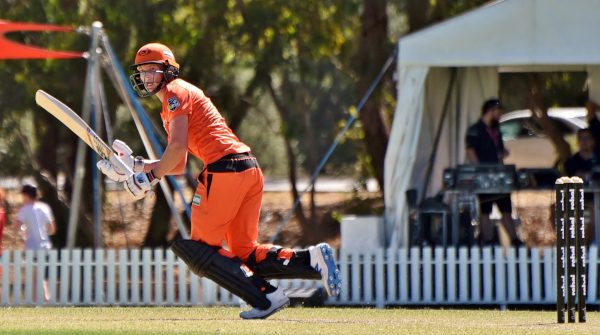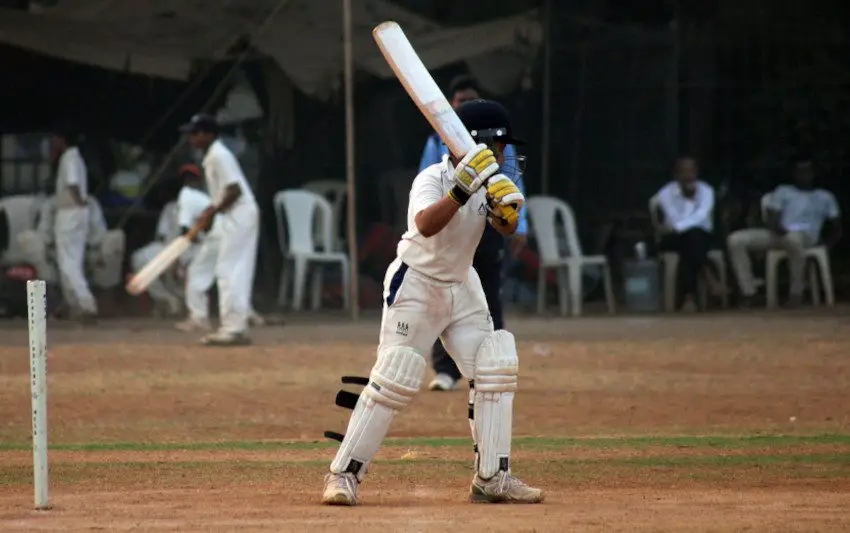Table of Contents
This is a target for all bowlers to achieve and a maiden over can give them a clear advantage against the batsmen but what does the term actually mean?
Note: Don’t miss out on our chart at the end: The Most Maiden Overs in Test Cricket
What is a Maiden Over in Cricket?
A Maiden Over is an over where no runs are scored by the batting side. This is achieved when no runs are scored from the bat and, in addition, there are no batting extras such as wides and no balls.
Technically, there can be byes and leg byes in a maiden over as these are not debited to the bowler.
As a separate entity, it’s worth noting that a wicket maiden can also be recorded. This is a maiden over which includes one or more wickets claimed by the bowler.
Significance of a Maiden Over
It’s always useful when a batting team doesn’t score any runs as this means that they have not gained any advantage at the end of a maiden over.
However, there can be other benefits for the fielding side that aren’t quite as obvious.

Scoreboard Pressure
The issue of scoreboard pressure plays a big part here: If a bowler sends down a maiden then the batsman will be more eager to score runs from the next deliveries that they face. This is particularly true in limited overs cricket where a maiden over can seriously affect the batting side’s run rate.
In test cricket, batters should have more patience in a game that can last for up to five days. However, a series of maiden overs can still increase that pressure.
With the need to score runs becoming increasingly desperate, there is more of a chance that the batsmen may make a mistake.
Because of this, maidens can be used as a tactic. Obviously, there is no guarantee that a maiden will be sent down but a fielding side can make it much harder to score runs through their positioning. It’s also possible that bowlers can use some negative tactics which would make a maiden more likely.
By bowling just outside of leg stump, it’s much harder for the batsmen to score runs.
Obviously this is a tactic that could not be used in the limited overs formats as anything outside of leg stump should be called ‘wide’.
Maiden Overs can also give the bowlers some momentum and they are also counted in their final statistics. As I’ve said many times, cricket is a sport where stats and numbers play a big role and that’s why we have this interactive chart to show you.

Sunil Narine’s Maiden Super Over
In a Super Over, the batsmen have just six balls to score as many runs as they can. They simply must attack from the very first delivery so the fact that Sunil Narine once bowled a maiden in a Super Over is simply incredible.
Narine was playing for Guyana Amazon Warriors against Trinidad and Tobago Red Steel in the 2014 Caribbean Premier League. Both teams made 118 after 20 overs in a low scoring match. The Warriors made 11 in their Super Over so the spinner had a modest target to defend.
Narine was up against the hard hitting Nicholas Pooran who couldn’t hit the first four balls. The fifth was caught at long off before New Zealand’s Ross Taylor failed to connect with the final delivery. Those who know their cricket will understand just how remarkable this is and I don’t believe that Sunil Narine’s maiden super over will ever be repeated.
Most Maiden Overs in Test Cricket
The chart shows the top 20 bowlers to have sent down the most maidens in test cricket. Those who follow the game won’t be surprised by some of the names, particularly those in the top five.
As well as being among the leading wicket takers, these players clearly produced some economical spells of bowling that put the pressure on the batsmen.
1. Muthiah Muralidaran (Sri Lanka)
The all-time leading wicket taker in test match cricket with an incredible 800 victims, Sri Lanka’s Muthiah Muralidaran played a long test career lasting from 1992 to 2010. He played 133 tests in total and, while he got through a lot of work with the ball, his record of 1794 maidens remains a remarkable one.
Murali was a mystery spinner and was extremely hard to score against. It’s therefore no surprise that his economy rate of 2.47 runs per over is the lowest of any bowler in the top five. That tight run rate created great pressure on the batsmen and that pressure undoubtedly contributed to his record haul of wickets.
2. Shane Warne (Australia)
Another great spinner, Australia’s Shane Warne was seen to be in competition with Murali as their career paths crossed. Ultimately, Warne played 145 tests to go second on the all-time wicket taking list with 708 victims.
In terms of maiden overs, Warne delivered 1761 of them in his time as a test cricketer so he’s a close second to the Sri Lankan master at the very top. The Australian’s economy rate is also respectable, coming in at a miserly 2.65.
3. Anil Kumble (India)
He was also classed as a spinner but India’s Anil Kumble didn’t actually turn the ball that much. A fast, skiddy delivery caused batsmen problems and gave the Indian 619 test wickets.
Kumble bowled 1576 maidens in his test career with an economy rate of 2.69.
4. James Anderson (England)
England’s Jimmy Anderson began his test career in 2003 and eventually became the leading wicket taker among fast bowlers.
Seam and swing are Anderson’s weapons and he advanced up the charts to take fourth position on this list of leading bowlers of maiden overs in test cricket. It’s no surprise that he is one of the greatest swing bowler of all time.
5. Glenn McGrath (Australia)
Glenn McGrath’s cunning seam bowling provided a brilliant foil for the spin of Shane Warne. An almost perfect, vertical wrist position helped the ball hit the seam with great regularity and this was the secret to McGrath’s success.
When he retired from test cricket in 2007, the Australian had 1470 maidens with an economy rate of 2.49.

Who Made the Most Consecutive Maidens in Test Cricket?
The man who bowled the most consecutive overs in test cricket went by the name of Rameshchandra Gangarum Nadkarni. Known more simply as ‘Bapu’, the left arm slow bowler played 41 test matches for India between 1955 and 1968.
In a test against England in Chennai in 1964, Nadkarni sent down a scarcely believable 21 consecutive maidens.
Like Sunil Narine’s Super Over feat, I don’t think this will ever be equalled.


